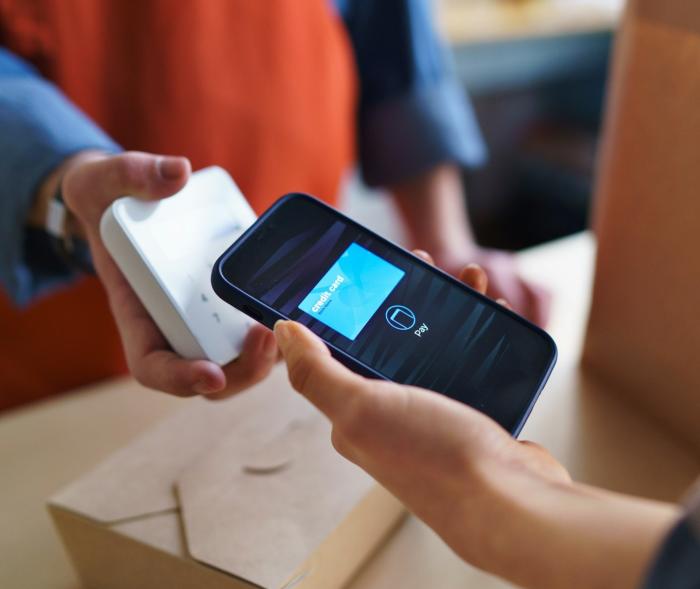As the IXOPAY payment orchestration platform celebrates its 10th anniversary this year, we look back at how the payments landscape has changed in that time. Mo, who has been with us since the platform's launch, looks back at how ecommerce has change beyond recognition in such a short time.
Has it really been 10 years? I’ve been at IXOPAY since 2014, and it’s the only place I’ve ever worked. I started out as a risk and fraud manager, supporting a client that hosted media files. Besides checking whether uploads infringed on copyright, one of my key responsibilities was to monitor payments to the hosting company. I’d check if the IP address matched the credit card BIN’s country, whether the user was behind a VPN etc. Back then, credit cards completely dominated the market - at least 80% of transactions were conducted using a credit card, although PayPal also played an important role alongside the odd alternative payment method.
Ecommerce was definitely secondary back then. While the internet had firmly established itself and every company had its own website, most purchases were still made on site and in person. I was no different. I’d use my debit card to withdraw cash from an ATM, then go to a store to buy what I wanted. My online purchases - and those of the vast majority of people - were restricted to products that simply weren’t available locally.
Online commerce was very much dominated by adult entertainment, gambling and gaming platforms like Steam. I would sometimes bet small amounts on football games to add a bit of spice. The fact that it was so much easier to place a bet online than go to a bookmaker heralded what was yet to come for ecommerce.
Discovering Ecommerce
Amazon was my first real experience of ecommerce. I remember a lot of fearmongering over online purchases. People told me not to provide my credit card details online for security reasons, so I bought Amazon vouchers instead. There was only a limited amount of credit on the card, which made me feel safe. Amazon was my gateway drug; the ease with which you could purchase was a real selling point. I soon discovered that it was safe and quickly lost most of my mistrust of online purchases.
The biggest game changer was when I discovered PayPal, and it’s still my favorite payment method. It’s really easy to use, there is buyer protection and their support is excellent. Purchasing online via PayPal was so much easier than using your credit card directly, especially back when programs like Verified by Visa were in their infancy. The whole authentication process caused far too much friction; but I could just register my credit card with PayPal once and use it anywhere online without hassle.
The Smartphone Revolution
Smartphones also significantly changed consumer behavior and drove ecommerce. Today, I make all my purchases by smartphone, and everything is directly integrated via various apps. But it took some time to get here. Apps needed to integrate multiple payment methods to create a smooth customer experience; opening up a browser window to complete a purchase was not seamless. Designing for smartphones from the beginning is the way to go. Thankfully, the experience of purchasing on a smartphone has improved significantly over the past 10 years.
This shift in consumer behavior was accelerated by the pandemic - COVID was devastating for brick and mortar retailers. I joined IXOPAY’s Customer Success team a year before the pandemic. When COVID hit, we saw a massive growth in transaction volume. We also experienced a huge spike in the number of requests from merchants looking to use IXOPAY. With brick and mortar stores closed, they needed to be onboarded as soon as possible in order to keep their businesses running.
But the payments revolution has also affected brick and mortar in other ways. It's become quicker to pay digitally at the supermarket checkout instead of with cash, which didn’t use to be the case. I now use my smartphone to pay for these purchases, via either mobile banking, Google Pay or Apple Pay. Every now and then I still need to stick in a card, but for the most part, it’s a completely seamless experience that speeds up the process significantly. Digital wallets are everywhere these days.
Going Cashless
These days, I rarely use cash. I have a 50 euro note that I’ve had in my pocket for months, just in case I need to make a payment using cash. There are very few scenarios where you can only pay with cash these days - maybe paying to use the cloakroom at a show. I’ve moved almost all my shopping online. The only thing I still buy in person is food, because it’s a great way to get inspiration for cooking. I order non-perishable goods like toilet paper and cleaning products in bulk online and just store them at home. It’s convenient and saves me from carrying heavy items.
The boom in ecommerce and digital payments over the past 10 years has made life a lot easier for many consumers. The smartphone revolution means you can take care of your shopping on the tram or in the doctor’s waiting room - whenever you have a moment of downtime. The transition to a largely cashless society even means that buskers and beggars are investing in card readers. I remember the first time I experienced this in Amsterdam. It really drove home how much things have changed in such a short time. But this rapid pace of change has posed real challenges for merchants, who have needed to support so many different payment methods within such a short period of time. As a Customer Success Manager at IXOPAY, there is a sense of satisfaction in knowing that we have helped to make this transition much easier for our clients.

